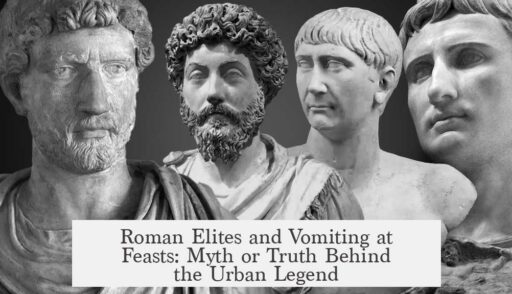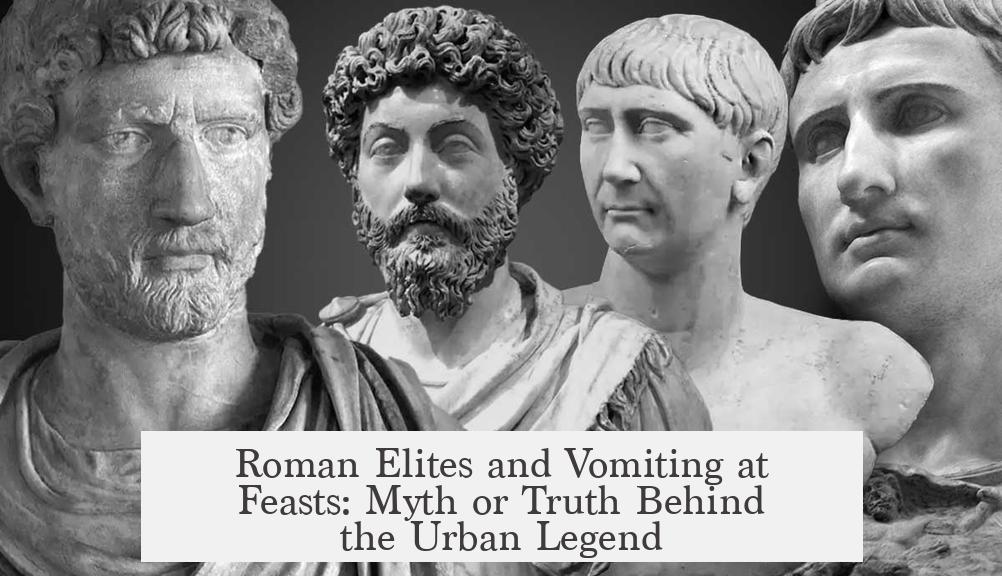Roman elites did not make themselves vomit during feasts as a recreational practice; this idea is largely an urban myth unsupported by reliable ancient evidence. The common belief that Romans induced vomiting to continue feasting stems from misinterpretations and modern myths rather than documented historical behavior.
The most cited source for this claim is a single passage from Seneca the Younger’s Consolation to Helvia 10.3. Seneca criticizes the excesses of the wealthy, stating they “vomit to eat, they eat to vomit.” However, this line is intended as moral criticism, not a factual report of customary behavior. The passage is exceptional and should not serve as a general description of aristocratic dining habits.
The infamous idea of a “vomitorium” as a special room where Romans induced vomiting is a misconception. The term vomitorium originally described architectural passages in amphitheaters, designed to swiftly “spew out” crowds into or out of venues. This architectural sense emerged in the modern era, specifically from Renaissance scholars in the 1500s, and gained popularity only in the 1700s. Ancient texts do not support any use of the word connected to vomiting after feasts.
Another frequent misunderstanding stems from mistranslations of Seneca’s Moral Letters 47.5, where the Latin word reliquias (“leftovers”) was wrongly rendered as “vomit” in some modern, non-professional sources, contributing to the myth’s spread.
There are documented cases of vomiting during Roman times, but these are often linked to medical reasons rather than indulgent feasting. For example, Cicero’s account in On behalf of king Deiotarus 21 reports Julius Caesar vomiting after meals. However, Caesar’s vomiting was due to a medical regimen involving emetics, not for enjoyment or excess.
The Roman reputation for excess and debauchery, popularized by works like Petronius’ Satyrica, includes only one known case of vomiting and that resulted from seasickness, not deliberate purging.
- Seneca’s passage is rare and moralizing, not descriptive.
- The “vomitorium” was an architectural term, never a vomiting room.
- Mistranslations helped spread the vomiting myth.
- Vomiting instances like Caesar’s were for medical reasons.
- Reported Roman excess rarely involved recreational vomiting.
Did the Roman Elites Make Themselves Vomit During Feasts or Is This Just Another Case of an Urban Myth?
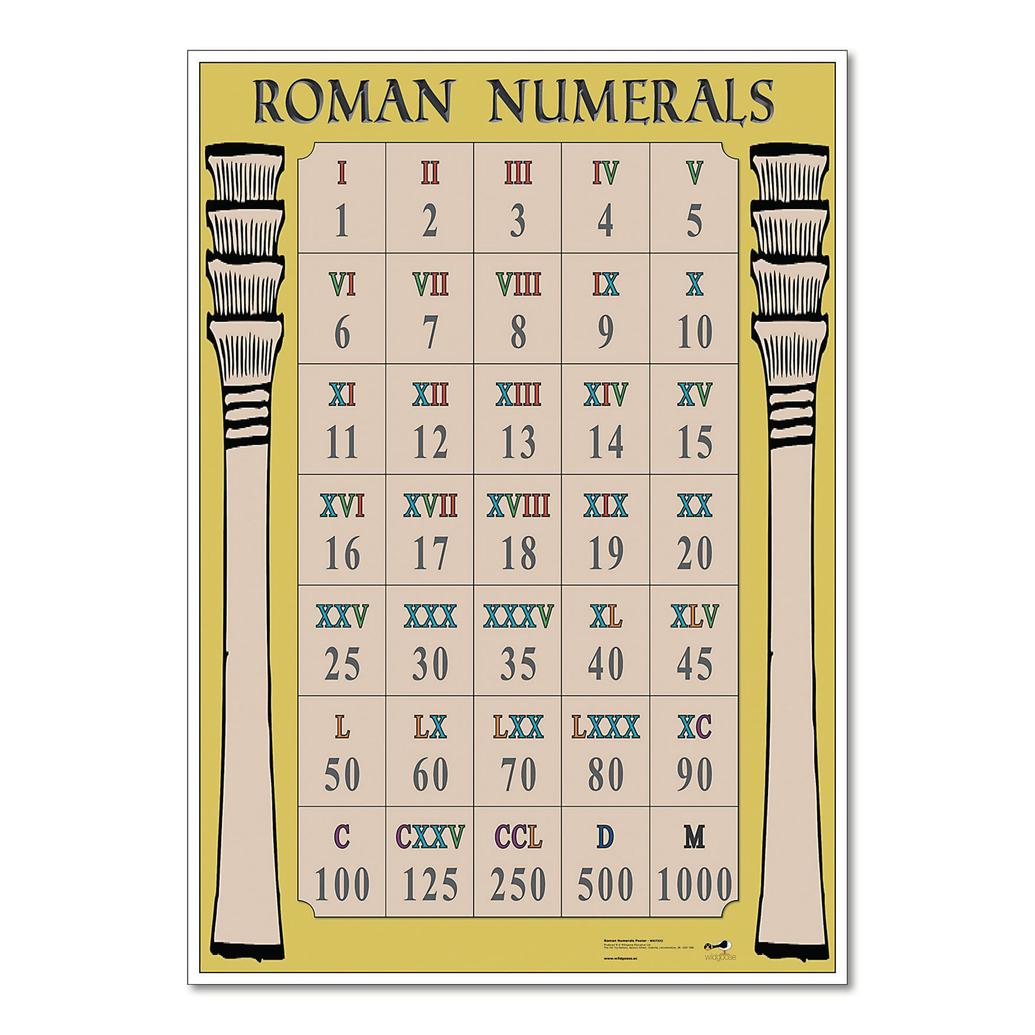
Here’s the straight answer: Roman elites did not make themselves vomit during feasts for fun. This idea is mostly an urban myth. But how did such a strange story even get started? Let’s unpack the facts and set the record straight—with some laughs along the way.
We’ve all heard the image of sweaty Roman patricians reclining on couches, stuffing themselves with exotic foods, then rushing to a special “vomiting room” to purge their bellies so they can eat more. Sounds wild and, frankly, like a bizarre party trick only ancients could dream up. Yet, digging deeper, this idea doesn’t hold up well against historical evidence. So buckle up for a myth-busting journey!
Seneca, The Source of Confusion

One key passage fans often cite comes from Seneca the Younger’s Consolation to Helvia (10.3). Seneca writes with biting sarcasm about “luxurious people” who import delicacies from far-off oceans and “vomit to eat, eat to vomit.” It’s a vivid picture, no doubt.
However, this passage is unique. It’s the only ancient text hinting at this behavior and clearly aims to criticize decadence rather than document common practices. It’s like calling out a reality TV star’s over-the-top lifestyle after one outrageous episode—not a guarantee that everyone is doing it.
In other words, the fact remains: Seneca’s critique is exceptional, not representative. We can think of it as ancient satire rather than a documentary.
The “Vomitorium”: A Myth Wrapped in a Myth
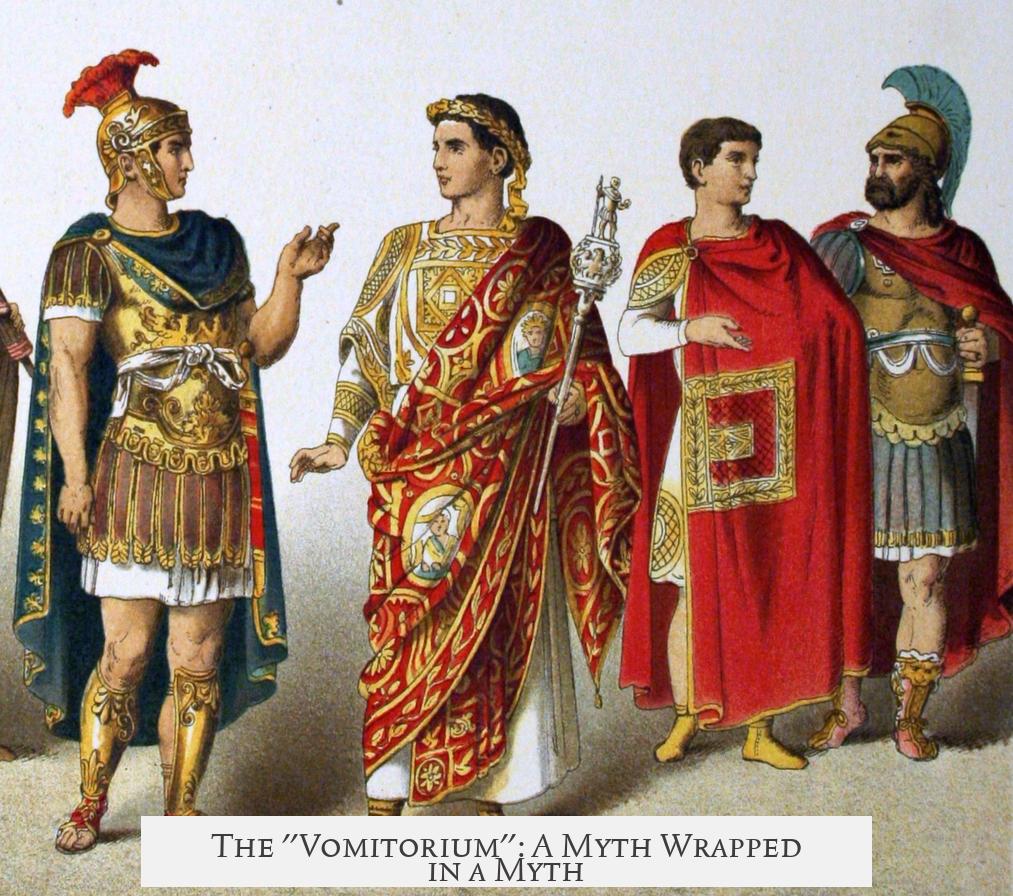
Everyone loves a good rumor, especially if it involves a “vomiting room” to relieve feasting excess. But here’s a twist: the “vomitorium” never meant a space for self-induced vomiting. The term literally means “a place that vomits forth,” referring to passageways in amphitheaters through which crowds quickly exited.
This architectural word evolved much later. The first evidence of “vomitorium” as a passageway comes from Renaissance scholars interpreting Roman texts hundreds of years after the fact. The meaning shifted before it reached popular culture’s misunderstandings.
So, no ancient “vomiting rooms” existed, even if the word sounds like it should be the perfect name for such a place.
A Translation Blunder Didn’t Help
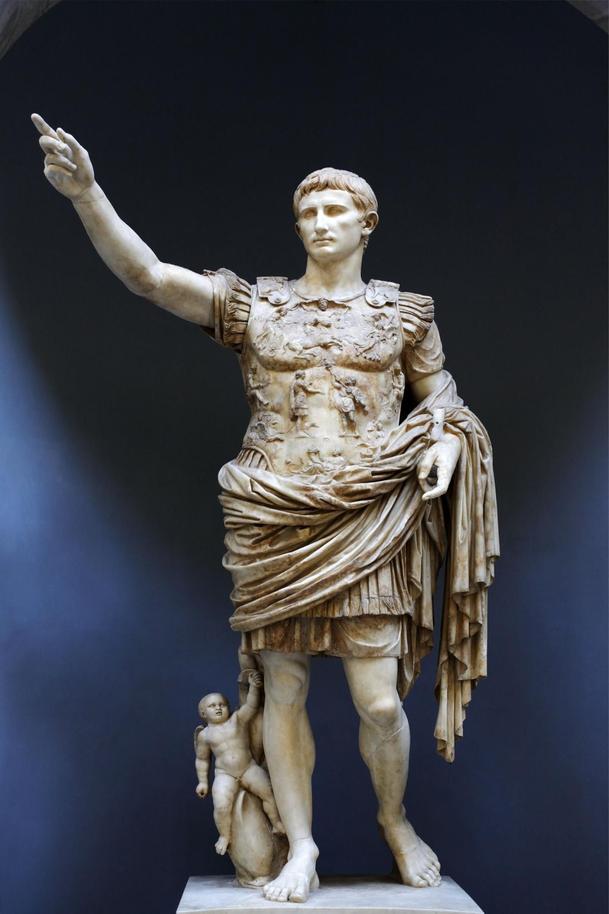
Adding fuel to the fire, a mistranslation in a 2005 blog post popularized the myth. This post incorrectly rendered the Latin reliquias (meaning “relics” or “remnants”) as “vomit.” Guess what? This bad translation found its way into academic books, giving the myth undeserved credibility.
This reminds us how sensitive historical interpretation is. A cute or scandalous mistranslation can echo loudly, especially online.
Julius Caesar and the Medically Prescribed Vomiting

Looking at historical figures for clues, Cicero reports that Julius Caesar sometimes vomited after meals. But this vomiting wasn’t a party trick—it was part of his medical treatment. Doctors prescribed emetics to help his digestion due to health issues.
Caesar enjoyed food without restraint, sure. But vomiting was not for continuing a feast; it was controlled and needed for his wellbeing. This far from supports any recreational vomiting theory.
Roman Feasts and Debauchery: Fact vs. Fiction
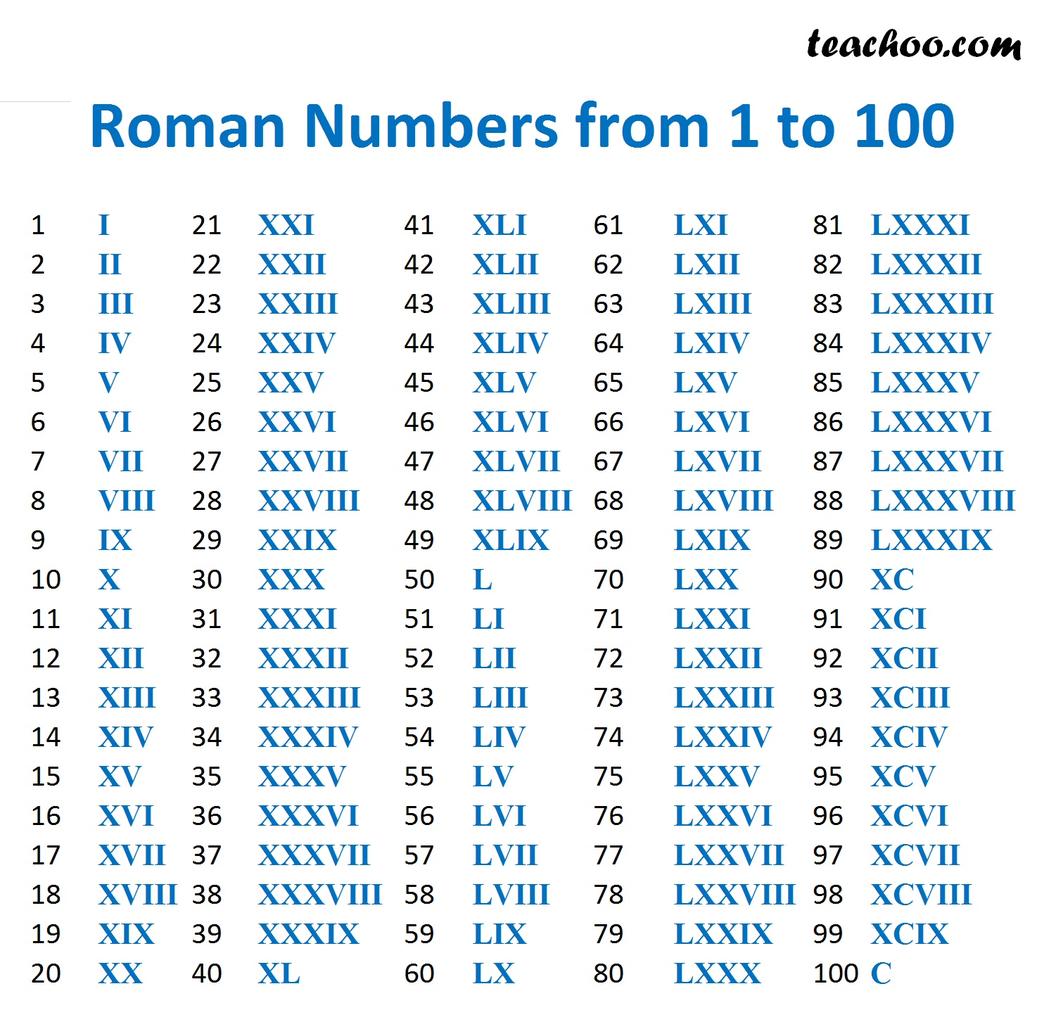
Romans had a reputation for indulgence. Petronius’ Satyrica, a comic and satirical novel, paints vivid pictures of lavish parties. But even there, vomiting appears only in a seasickness scene, not as a feasting technique.
Their reputation is based more on excess, wild drinking, and social excess than on any self-induced vomiting contests.
So Why Does This Myth Persist?

Stories that tickle our imaginations tend to stick. The idea of “vomiting to eat more” matches modern ideas of ridiculous excess and decadence—an easy and humorous way to illustrate Roman elite extravagance. The “vomitorium” myth satisfies this with easy visuals and catchy terminology.
But reality is often less entertaining. Roman feasts were elaborate affairs involving many courses, music, and social rituals—not barfing contests.
What Can We Learn?
- Be skeptical: Unique passages or sensational translations need context.
- Check the source: Seneca’s criticism is rhetorical, not documentary evidence.
- Beware double myths: The “vomitorium” story confuses a word’s later meaning with reality.
So next time you hear about Roman elites making themselves vomit during feasts, you can confidently tell your friends it’s mostly a historic tall tale. Instead, the Romans had real doctors and social norms to keep their parties civilized.
Have you ever tried pushing the limits at a buffet?
Unlike Romans (mythically), we don’t need to worry about finding a “vomiting room.” But it’s fascinating how myths grow and thrive, sometimes from a single sarcastic line or a mistranslation years later. History, with all its quirks, keeps us guessing!
Want to see real Roman feasting traditions without the rumors? Explore how Romans enjoyed ingredients like dormice, oysters, and garum—a fermented fish sauce less likely to make you lose your lunch than you’d think.
In the end, knowing the difference between myth and fact adds flavor to history much like a well-prepared feast—rich, surprising, and satisfying without the unnecessary mess.
